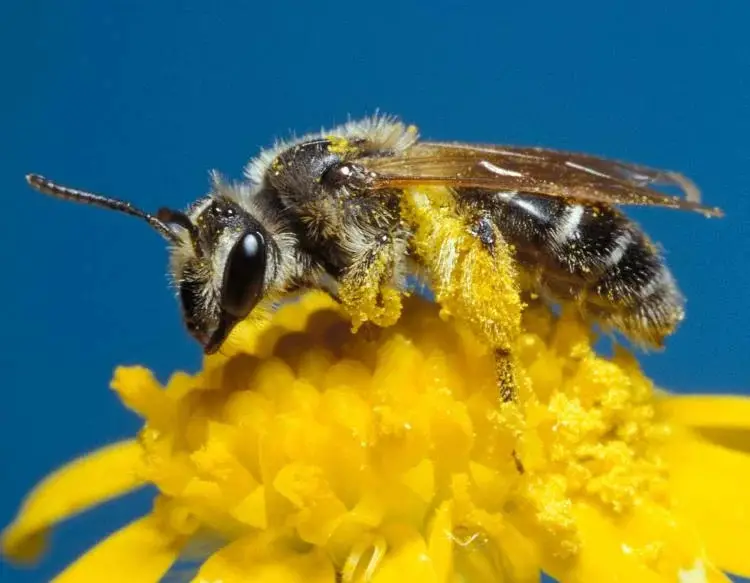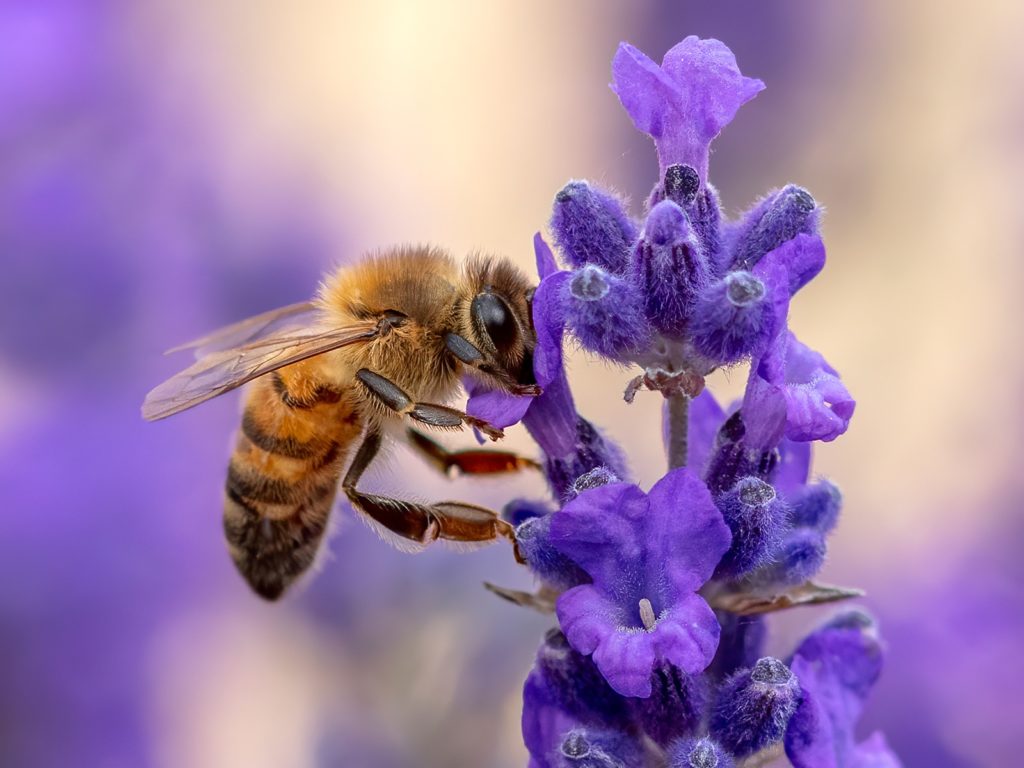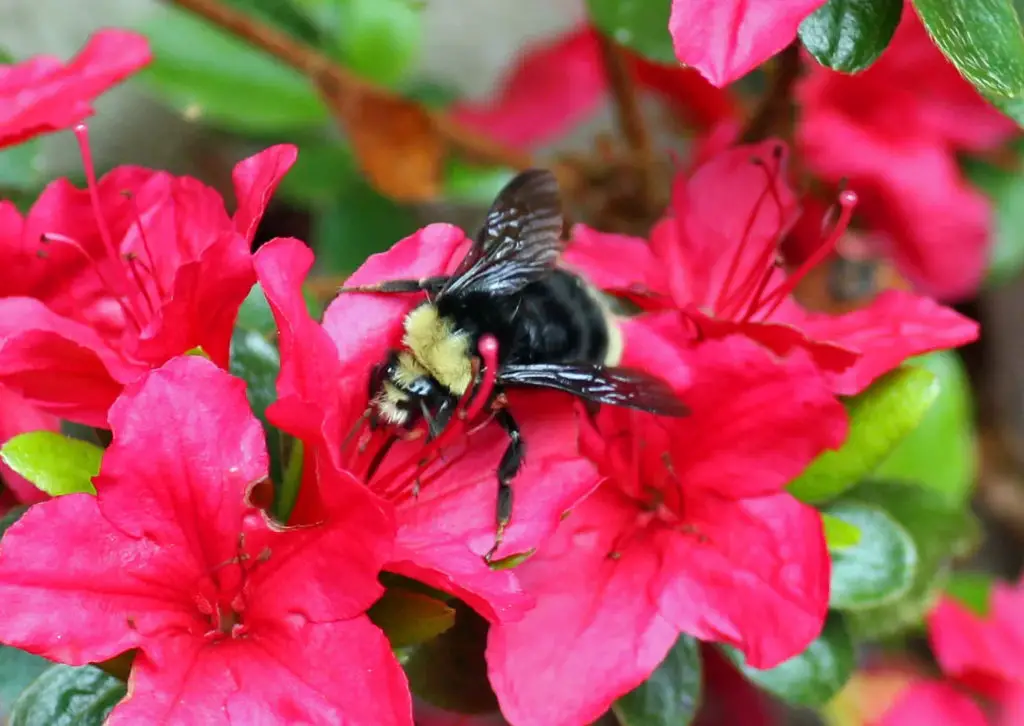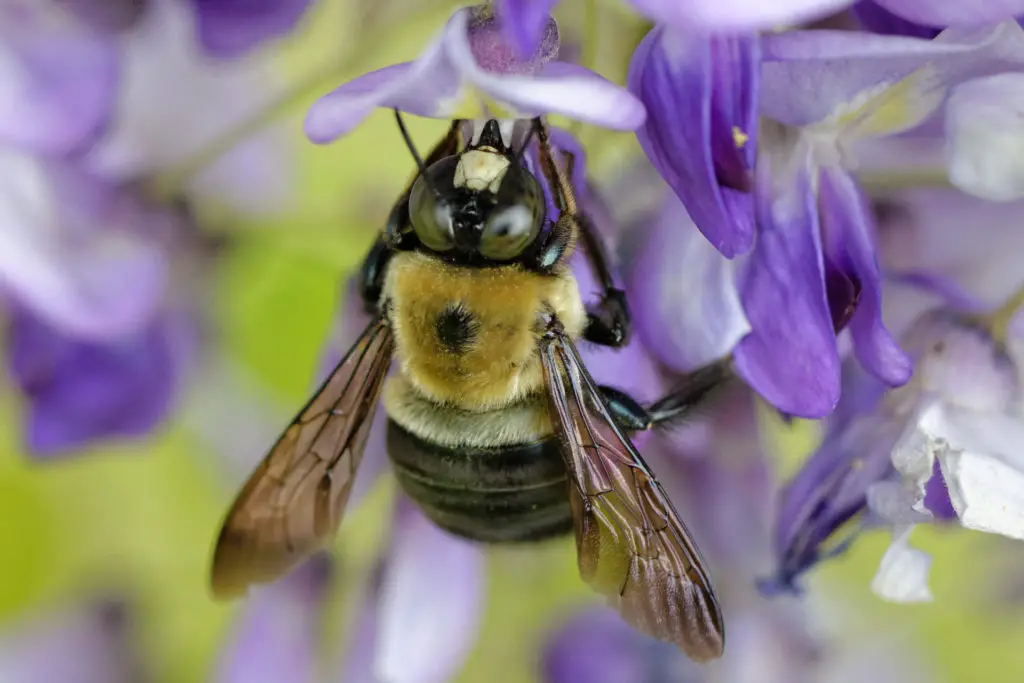Affiliate Disclaimer - As an Amazon Associate I earn from qualifying purchases.
It supports the website. So, Thank you
Are Azaleas Bad For Bees? Not all bees are affected by Azaleas. Bumble Bees appear to be unharmed by the toxins in the Azaleas nectar and as such are prolific pollinators of Azaleas and other Rhododendron species. However, Azaleas are very bad for Honey Bees and Mining Bees as the toxic nectar can cause death in a matter of hours.
Table of Contents
What are Azaleas?
Azaleas are a type of flowering shrub that comes in a variety of colors including pinks, purples, oranges, yellows, whites, and reds. They are often used in landscaping and make a beautiful addition to any garden. Azaleas are part of the Rhododendron family, flowering in April & May in the US.
Are Azaleas Bad For Bees?
Rhododendron and Azaleas can be toxic to certain bee species, leading to their death. Bee-keepers and commercial honey producers should avoid planting Azaleas near their bees.
Azaleas make for bad and even highly toxic honey, which can be lethal to bees. This toxic honey, otherwise known as ‘Mad Honey’ was previously used by ancient Turks to intoxicate and disorientate invading armies which made them easier to overpower.
It has been proven, however, that at natural levels, the toxins in Azalea nectar do not affect Bumble Bees. This makes for a symbiotic relationship between Bumble Bees and Azaleas as the toxins in the nectar reduce the number of less preferred bees and preserve the nectar for bumblebee pollinators which can tolerate the toxin.
What is the role of bees in the garden?
Bees and their many species are important for gardens because they help to pollinate plants. This is important because plants need to be pollinated in order to reproduce and create new plants. Without bees, the garden would not be as lush and full of life.
The flowers of Rhododendron plants are visited almost exclusively by bumblebees, with occasional visits from solitary bees, flies, ants and wasps.
The nectar’s grayanotoxins cause palpitations, paralysis and death within hours for honey bees.
It is suspected that the subspecies of honey bee that makes mad honey in the Rhododendron’s native range has probably evolved to resist the toxins in a similar way to the bumblebees

Are Azaleas good for honey production?
A lot of people don’t know that Azaleas are actually bad for honey production as the nectar is toxic to Honey Bees. Honey bees that collect nectar from Azaleas can become disoriented, dizzy and die.
What are some plants that are bad for bees?
Some plants that are bad for bees are:
- Rhododendrons
- Yew
- Boxwood
- Butterfly Bush
- Veratrum californicum (California corn lily, or California false hellebore)
Some plants that are bad for bees include those that produce poisonous nectar and those that flower in the winter months when bees would usually be hibernating.
What are some plants that are good for bees?
Some plants that are good for bees are:
- Lavender
- Roses
- Oregano
- California Lilac
- Sunflowers
- Chives
- Lupins
Some other plants that are good for bees include Black-Eyed Susan, Fennel, Cranesbill and Thrift.

The declining bee population and what’s being done to save them
Bee species are in trouble and their declining population is a big problem for all of us as they form an important part of the food chain and help to reduce global warming. Without bees, our gardens would not be as full of life and we would not have as many plants, including plants that provide us with food and medicines.
The benefits of bees for the environment
It is important to protect bees that work in our gardens because they help to pollinate plants, which in turn helps the plants to reproduce. This is important because plants need to be pollinated in order to reproduce and create new plants.
Without bees, the garden would not be as lush and full of life and we would not have enough oxygenators to combat global warming.
Plants are good for reducing carbon monoxide and reducing global warming, so this helps the whole planet.
How can we help protect bees in our garden?
We all need to do our bit to help the environment, including helping to protect insects and other wildlife. Some ways to help protect bees in your garden are to:
- Planting a variety of flowers that bloom at different times of the year.
- Avoid using pesticides and herbicides.
- Create a bee bath.
- Install a beehive or a bee hotel in your garden.
- Provide a bee feeder / create a water source for bees
- Leaving a section of our garden untouched for bees to nest in
Conclusion
While it is still important to do our part in planting gardens that attract bees, we should also be mindful of the plants we choose. Azaleas are beautiful flowers, but they may not be the best choice for our garden if we want to help support bee populations. If you’re looking for a flowering plant that will benefit both your garden and local bees, consider planting some lavender instead!




